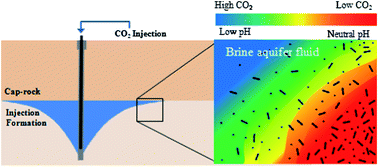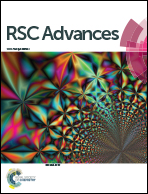CO2 concentration and pH alters subsurface microbial ecology at reservoir temperature and pressure†
Abstract
The security of long-term CO2 storage following geologic carbon sequestration may be impacted by biogeochemical reactions in the formation; yet little understanding exists about the impact of CO2 gradients on microorganisms that drive biogeochemistry in the deep subsurface. The effect of CO2 gradients on the microbial community from a brine aquifer was examined at reservoir pressure (14 MPa) and temperature (40 °C). The community was exposed to pCO2 at 0, 0.1, 1.4 and 14 MPa for up to 56 days and was examined using 16S rRNA gene clone libraries and qPCR. Diversity indices (equitability) were also determined. In addition, the effect of lowered pH without CO2 exposure was examined. Exposure to CO2 resulted in a decrease in microbial diversity and a decrease in 16S rRNA gene concentrations. After 56 days, no 16S genes were recovered following exposure to 1.4 MPa pCO2 or greater. Exposure to 0.1 MPa pCO2 resulted in 16S gene concentrations an order of magnitude less than 0 MPa pCO2. The equitability of 0 MPa exposure (0.54) decreased with 0.1 MPa exposure to 0.29. Microbial community with the lowered pH (pH = 4.4) and 0 MPa pCO2 resulted in 5 orders of magnitude increased 16S gene concentration than reactors with CO2 exposure, indicating that CO2 was detrimental independent of pH. This suggests that even buffered reservoirs may have a decreased microbial population due to injected CO2. Halotolerant strains Halomonas and Marinobacter appeared to be the most tolerant to CO2 exposure and decreased pH. This is the first study to examine the initial microbial community response to a gradient of CO2 that would follow geologic carbon sequestration.


 Please wait while we load your content...
Please wait while we load your content...